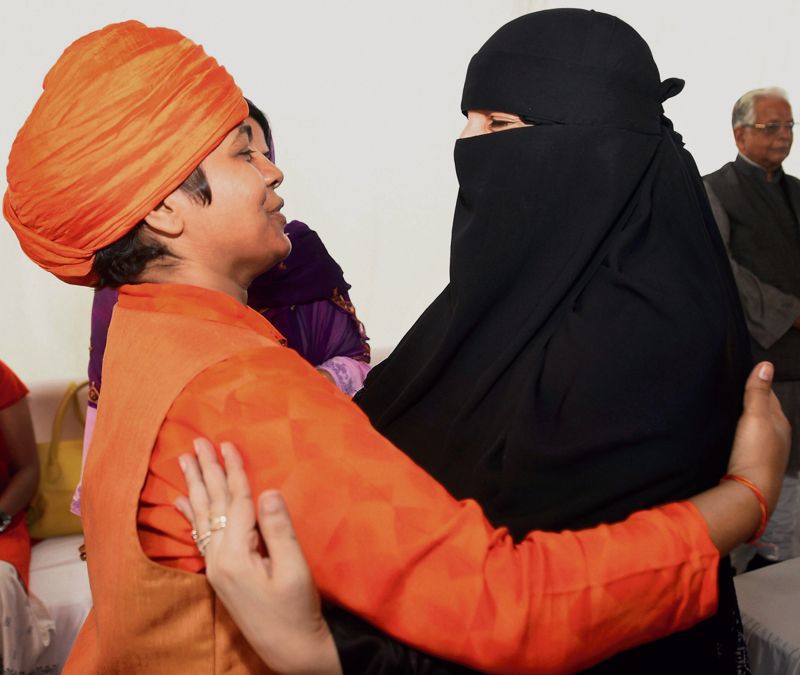People ignore shared heritage at their own peril
THE Uttar Pradesh Government’s order (now stayed by the Supreme Court) that eateries along the route taken by kanwariyas display the names of owners is yet another instance of a deeply flawed understanding of our shared traditions that constitute culture; it is another example of how the BJP is capitalising on mischievous colonial readings of Islamic rule. According to historian Richard M Eaton, much of the contemporary evidence of temple desecration is to be found in Persian material translated and published during the period of British rule. The eight-volume History of India as Told by Its Own Historians was edited and published by Prof John Dowson (from the papers of Sir Henry Elliot) between 1867 and 1877. Elliot was keen to contrast the justice and efficiency of the British rule with the cruelty and despotism of Muslim rulers. He cherrypicked facts from history.
Noted historian Mohammed Habib, in his inaugural address to the 1947 Indian History Congress, stated that according to colonialists, the peaceful Indian Mussalman, descended beyond doubt from Hindu ancestors, was dressed up in the garb of a foreign barbarian, as a breaker of temples, as an eater of beef, and declared to be a military colonialist in a land in which he had had lived for millennia. Elliot, he alleged, had selectively used pre-modern Persian chronicles. This was not only unethical but also designed to harm social relations in plural society.
Pluralism implies that when we walk through the garden of religions and their cultures in India — Hinduism, Buddhism, Jainism, Sikhism, Islam and Christianity — we become conscious that our cultural contexts are shaped by the poetry of Mirza Ghalib and Sahir Ludhianvi as well as the insightful writings of Guru Gobind Singh and Premchand. Consider the advantages of living and breathing a plural culture. We do not need a fixed identity marker or a hook we desperately cling to for security. We do not look for an unbreakable anchor that connects us to land, because we tremble in fear at the stormy waters of the sea. We are free. As Sufi saint Bulle Shah memorably said: “Bulla ki jaana main kaun… na mein bhed mazhab de paya/Na mein aadam hawwa jaya/Na koi apna naam dharaya (Bulla, how do I know who I am? I have not fathomed the mysteries of religion/ I was not born to Adam and Eve/ I have no fixed name).”
Alternatively, we think of ourselves as the product of many cultures. Young Urdu poet Hussain Haidry writes: “Mere ek nahi sau chehre hain/Sau rang ke hain kirdar mere/Sau kalam se likhi kahaani hoon/ Mein jitna Mussalman hun bhai/Mein utna Hindustani hoon (I do not have one but a hundred faces, my roles are manifold, my story has been written by a hundred pens. I am a Muslim; I am also an Indian).”
A story about legendary painter MF Husain illustrates this point. He was one of the two honoured guests to the prestigious Sao Paulo exhibition. One whole section of the gallery was devoted to his illustrations from the Mahabharata. When asked whether he was a Muslim, he replied, “Yes, but I am an Indian and my roots are deeper and older than Islam”. This sensibility is part of our shared legacy, for which the evocative Hindi/Punjabi phrase is Sanjhi Virasat.
It is this Sanjhi Virasat we can recover by once again interpreting our history not as wholly conflictual but also marked by co-existence of shared traditions. How can we think creatively, unless we do so in a context that offers us ideas and ideals we can draw upon? This shared culture is ours, it forms the context of our lives and our consciousness. As far as amoral politicians go, Jigar Moradabadi gave an answer back in 1960: “Unka jo farz hai, woh ahl-e-siyasat jaanein/mera paigam mohabbat hai, jahan tak pahunche (Let the politicians do their job, my message is that of love, wherever it reaches).”
The phrase ‘Sanjhi Virasat’ brings to mind a tapestry woven in different hues that interweave to create amazingly spectacular pictures. The moment we turn over the tapestry, different strands stand out as distinct, and yet as a part of an intricate process of coming together. We borrow from each other and lend to each other, but this does not imply the obliteration of our own identity. We speak in many tongues and each language is distinctive in its own right, but we also speak languages that are in common with others. This shared tradition constitutes our culture that guides our relationships to each other in contemporary society. People ignore the history of fusion at their own peril.
Think of how rich, how creative our life becomes once we recognise and appreciate our Sanjhi Virasat. To quote Haidry again: “Mujhme Gita ka saar bhi hai/Ek Urdu ka akhbar bhi hai/Mera ek mahina Ramzan bhi hai/Maine kiya toh Ganga snaan bhi hai… Mandir ki chaukhat meri hai/Masjid ke Qible mere hain/Gurdwara ka darbaar mera/Yeshu ke girje mere hain (I carry within me the essence of the Gita but also an Urdu newspaper, the month of Ramzan is mine, I have also bathed in the Ganga, the threshold of a temple is mine, the minarets of the mosque are mine, the darbar of the gurdwara is mine, and the church is mine).” This is Sanjhi Virasat.









